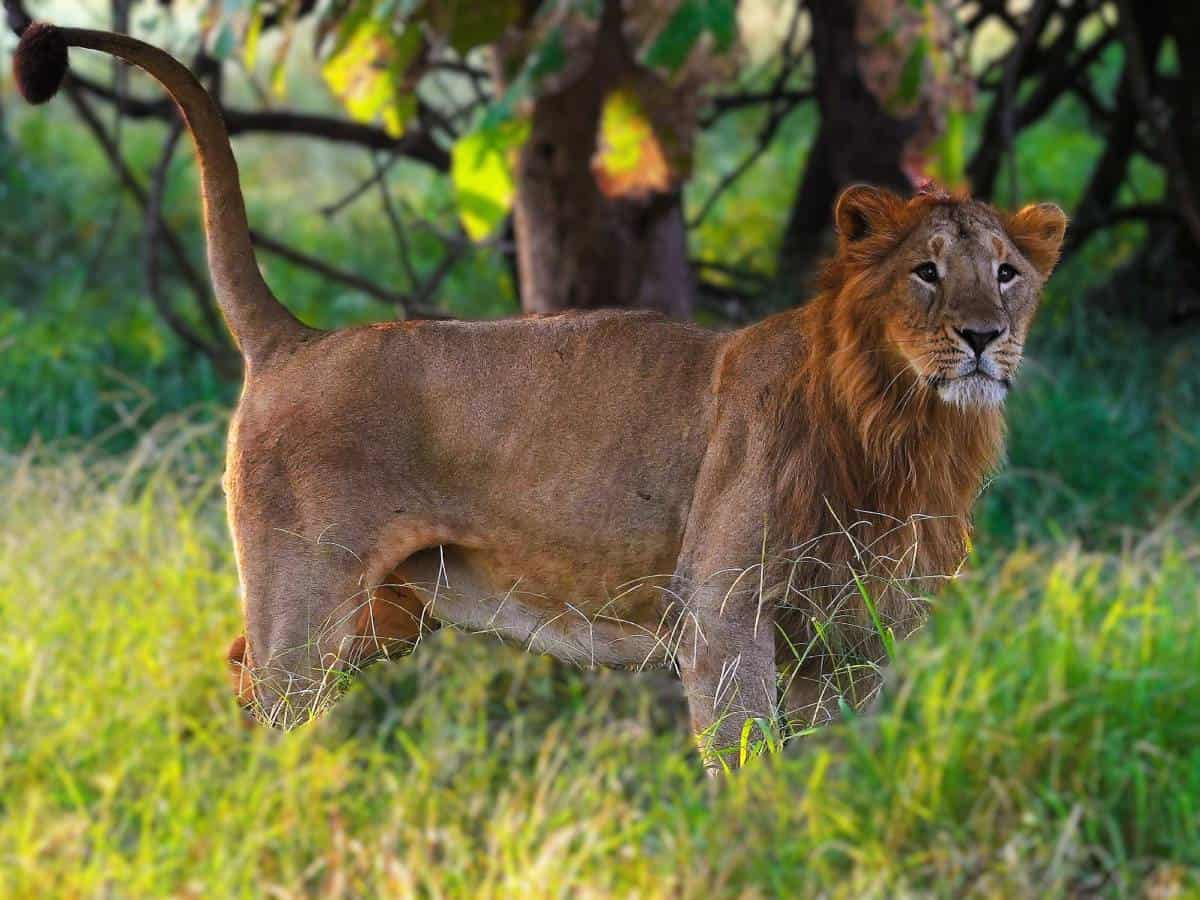
In the first week of March, India’s Prime Minister visited Gir National Park in Gujarat to mark World Wildlife Day. He embarked on a lion safari to see the Asiatic lions and praised the collective efforts that have led to a steady increase in their population over two decades. He promised to expand conservation efforts beyond the park to a 30,000 sq km area.
In this context, let’s look at the reality on the ground at Gir.
Once, the mighty Asiatic Lion ruled vast lands, from Greece’s golden shores to the sun-scorched Middle East and India’s sprawling grasslands. Now, it clings to survival, its last bastion hidden deep in Gujarat’s Gir Forest. Here, amidst rugged terrain and emerald canopies, its roar still thunders—a defiant cry against extinction.

Living legends in stone
These lions are more than beasts; they are symbols of power, woven into the fabric of Indian history. Their likeness graces ancient temple carvings, their presence immortalized in folklore and grand palaces. Even during British rule, they adorned royal emblems and grand entrances. Yet, paradoxically, both Indian Maharajas and British elites slaughtered them for sport, nearly wiping them out.
A near extinction

The Sarnath Pillar, raised by Emperor Ashoka in the 3rd century BC, stands as India’s heritage cornerstone. Its crowning Lion Capital now serves as the nation’s emblem—a mark of strength, courage, and composure. But reverence didn’t spare the real lions. By the early 1900s, only a dozen remained. Conservation efforts slowly breathed life back into the species, pushing their numbers to 674 by 2020. Yet, their survival remains precarious, bound to a single sanctuary. A stark reality surfaced in March 2024 when Gujarat’s Assembly report revealed 286 lions and 456 leopards had perished in just two years. Disease, habitat constraints, and human-wildlife conflict loom large.
Face-to-face with the kings

I first locked eyes with a mating pair in Gir’s dry forests in 2007. I returned in 2008, then again in 2010, 2014, and most recently in 2023. Each visit painted a shifting portrait of the park—more leopards visible, lions seemingly elusive. Still, the ecosystem holds strong. Deer, antelope, wild boar, etc. sustain the predators, while water sources remain steady.
But Gir is more than its lions. The forest teems with life—2,375 species of fauna, from stealthy Indian leopards and prowling striped hyenas to marsh crocodiles and golden jackals. Over 300 bird species coexist, from majestic Serpent Eagles to vibrant Paradise Flycatchers.
A triumph of conservation
Spanning nearly 1,500 square kilometres across Gujarat’s Saurashtra region, Gir National Park is a stronghold of survival, it draws visitors eager to witness this conservation miracle. Once teetering on the brink, the Asiatic Lion has clawed back from oblivion, a testament to a century of tireless efforts. Gir’s success isn’t just about saving lions—it fuels ecotourism, creates jobs, and fosters awareness. Meticulous tracking ensures health monitoring, breeding control, and conflict mitigation. Political backing and financial investment further cement its protection.
Danger of a single refuge
But triumph breeds vulnerability. Gir’s monopoly on lion survival is a ticking time bomb. A single disease outbreak—like the 2018 canine distemper virus that wiped out dozens—could be catastrophic.
Inbreeding weakens genetic resilience. Resource scarcity forces lions into human settlements, sparking deadly conflicts. Males battle for dominance, sometimes to the death. Roads and railways add another layer of peril. While poaching is largely under control, the threat never truly vanishes.
The path forward

Gir’s conservation story is remarkable—but incomplete. The solution? Expansion beyond Gir.
Translocation efforts must break free from political and bureaucratic shackles. The perfect second home already exists—Kuno-Palpur Wildlife Sanctuary in Madhya Pradesh. Its ecosystem is ready. Villages have been relocated. The Supreme Court has ruled in favour. And yet, inaction prevails. This isn’t a debate. It’s a necessity.
Translocation must move from paper to action. More protected habitats must emerge. Disease surveillance must tighten. Local communities must be allies, not adversaries. Above all, the genetic diversity of this species must be safeguarded. The future of the Asiatic Lion is more than conservation—it’s a national duty. A roaring legacy must not be confined to a shrinking island of green. It must reclaim its dominion, ensuring that generations to come will still hear the thunder of the last great lion of Asia.
Asiatic Lions must roar
“It’s like a life insurance policy; we do not take an insurance policy expecting to die, but we do so to protect against unexpected events. Similarly, a second home will protect against extinction for the free-ranging Asiatic Lions, which are an integral part of India’s unique and diverse natural heritage,” asserts Dr. Ravi Chellam, a veteran wildlife ecologist who has spent decades studying these majestic big cats. Presently the CEO of Metastring Foundation and Biodiversity Collaborative, Dr. Chellam warns that inaction is a death sentence.

